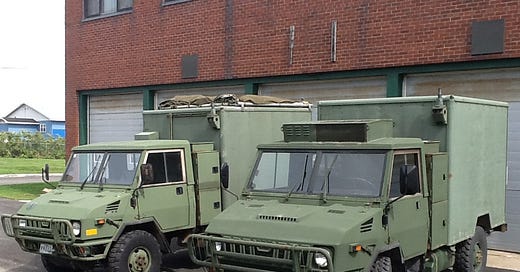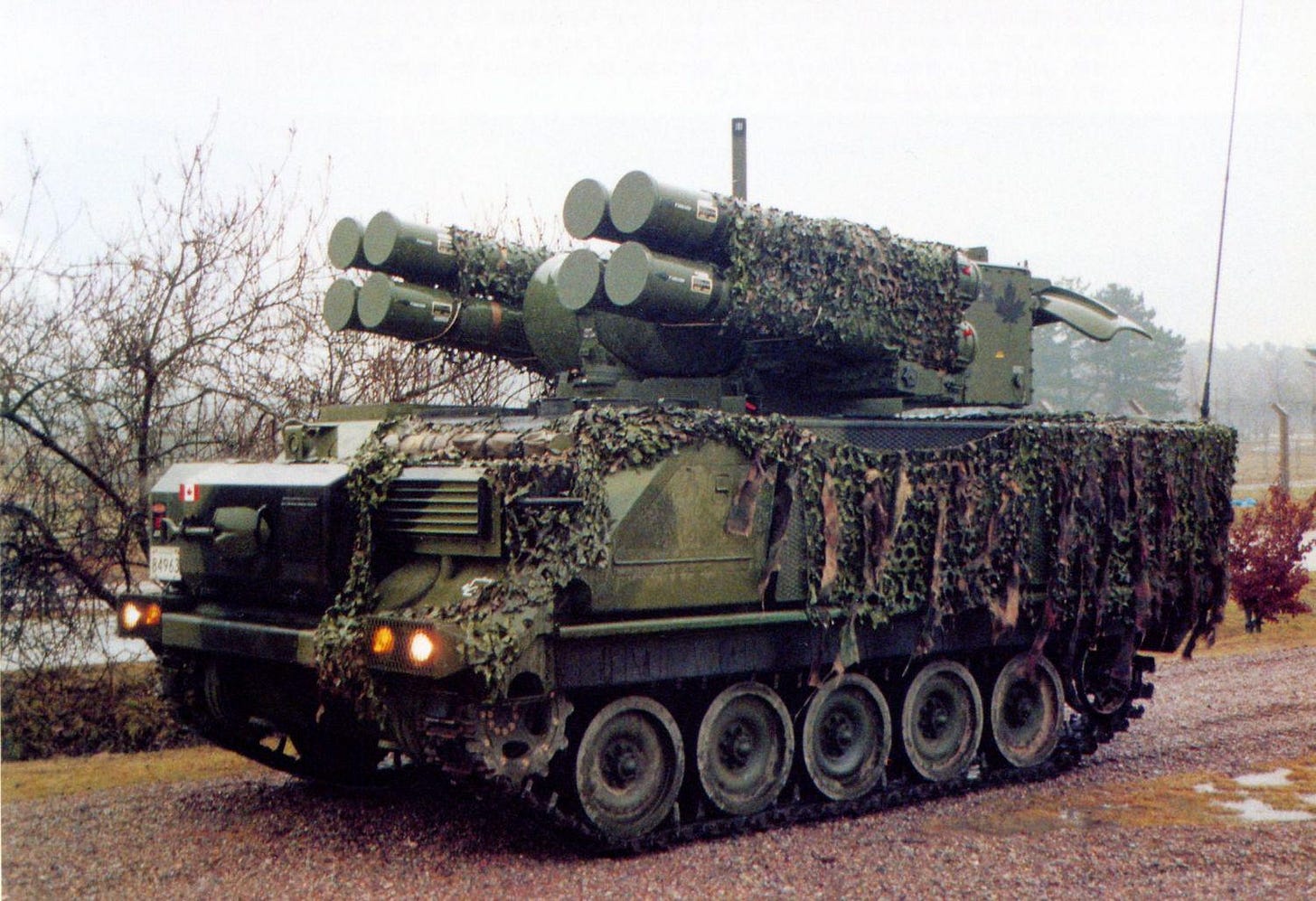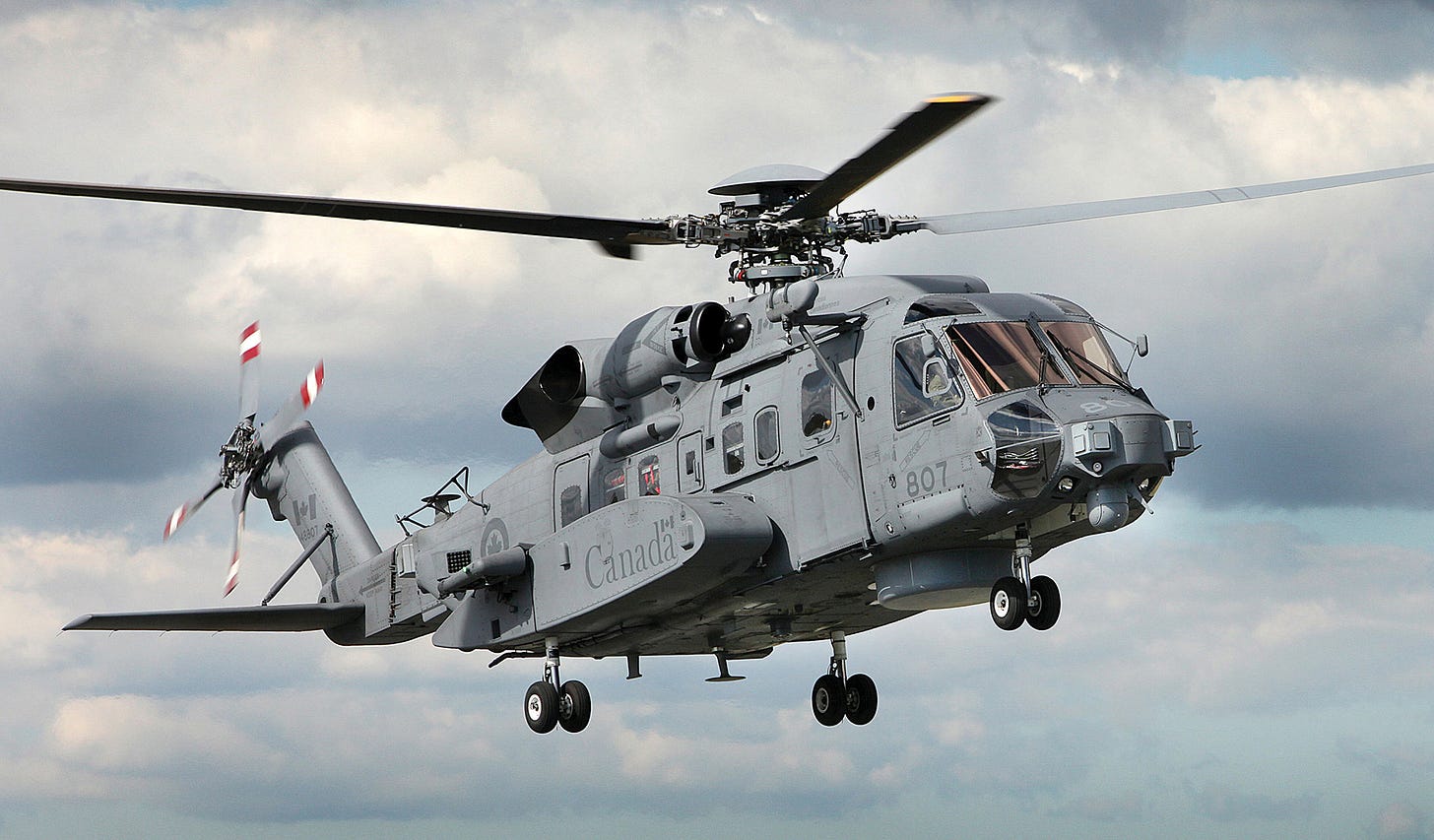It was inevitable - the article about Canadian defence procurement—a system that may be the most arcane and broken of any major democracy.
First, a caveat.
I never worked in procurement. My career was in operations, and I often found myself on the receiving end of whatever managed to make it through the system unscathed. However, I’ve held senior positions where I made decisions on systems and been on the implementation side of various projects. Because memories fade, I hope readers will excuse any minor errors.
Defence procurement in Canada is widely regarded as broken—even by those working within the system. It’s overly complex, expensive, politicized, and frequently places military requirements below other priorities. There’s ongoing tension between the armed forces, which often know—from their experience and that of our allies—what systems they want, and bureaucrats who demand strict adherence to contracting rules and competitive processes. I’ll let you guess which side I’m generally on. It’s no surprise the two sides are often at odds.
Politics as Usual
Part of the problem is Canada’s lack of seriousness regarding defence affairs. Procurement is viewed as just another government purchase rather than one that could literally mean life or death. This attitude is reflected in procurement decisions being made for economic development reasons, with military utility a distant second.
Examples of this approach are too numerous to list in a short article. Some are straightforward pork-barrelling, while others are misguided attempts to create high-tech industries from scratch. You see, Canada essentially destroyed its defence industrial base—deliberately—in the 1960s and 70s and has struggled to rebuild it ever since. The destruction was partly ideological (Canada couldn’t be seen as “militaristic”) and partly tied to a decision to focus Canadian military purchases in the U.S. The result? The mess we have now. Two examples will suffice.
Squeeeeeeeek!
The Light Support Vehicle (Wheeled), or LSVW, was a light truck procured in the mid-1990s. In a stunning example of political interference, the Armed Forces were directed by the Conservative government of the time to disregard vehicle testing and scrap the results of the competition. Instead, the military was told to purchase a modified Italian truck from Western Star, a commercial semi-truck manufacturer with no military background. The truck had repeatedly failed testing, but production of hundreds of vehicles began in Kelowna, BC. The result was predictable. The LSVW was unreliable, fragile, and had a tire-changing system that could kill the operator. It also had brakes that squealed with an ear-piercing noise. The vehicle quickly became loathed, yet small numbers remain in service almost 30 years later.
We Built an Industry and No One Came
More egregious was the saga of the Air Defence Anti-Tank System (ADATS), an advanced missile system designed to shoot down aircraft and engage ground targets. The federal government, eager to establish a high-tech capability, quickly funded a factory in Quebec with visions of foreign sales. There was immediate scandal regarding the land procurement for the factory, and although ADATS was very capable, no foreign sales materialized. Canada spent hundreds of millions for 36 systems, most of which spent their service lives in storage—at the manufacturer’s facility, paid out of the defence budget. The Army maintained nine operational missile units for a few years before discarding its air defence capability completely.
Those Who Don’t Learn from History… Oh, Nevermind…
There are countless other examples of directed purchases, orphan systems, and ill-advised attempts to build marketable products for export. These have rarely been successful. For example, the Air Force flies a commercial helicopter (the Bell 412) rather than a dedicated military aircraft, partly because it’s built in Quebec. Canada also funded the extremely expensive integration of anti-submarine and naval technology into a Sikorsky helicopter (now the Cyclone) that only our Air Force flies. We messed around with an Army digital communications system (TCCCS) for years before a watered-down version was fielded. The list goes on.
Adding to this complexity, military projects can take years—from concept to fielding. This is true for even the most basic systems like trucks, pistols, transport aircraft, and uniforms. Project definition often seems to take forever, as the military negotiates specifications with other government agencies. It’s worth noting that the Armed Forces cannot purchase anything over a certain dollar amount (around $5 million) without entering a bureaucratic process that typically involves a competition and contracts. Considering that armed forces are large and expensive organizations, you can see how things might get bogged down.
The Enemy is Us
I said earlier that the bureaucracy views military recommendations for major purchases with suspicion. As a retired soldier, I believe the Armed Forces know what they want based on operational experience, time with allies, and system knowledge. But the suspicion isn’t entirely misplaced. There’s an enormous urge to go for the best possible solution, knowing a replacement may be decades away. Worse, some services can’t resist adding special Canadian requirements to systems, inevitably driving up costs and adding delays.
All of this contributes to delays in getting a project off the ground, exacerbated by a lack of urgency and a desire to stretch timelines to fit budgetary needs. The recently announced Liberal defence plan, for example, stretches timelines for critical equipment well into the next two decades. Indeed, the Navy’s new warship project is expected to run into 2050, by which time I’ll likely be in a home or dead.
This can’t go on. Other major countries purchase military equipment without the issues Canada faces. Poland, for example, is undergoing a major force expansion due to the Russian invasion of Ukraine. They’re currently purchasing systems on short timelines while developing their own defence infrastructure. Canada, a wealthier nation, can’t seem to get its act together.
Ideas for Change
So, what can be done? Here are a few ideas, keeping in mind the caveats I mentioned earlier:
Stop funding the creation of orphan equipment that’s not used elsewhere. Travesties like ADATS and the Cyclone purchase should never happen again.
Stop messing with existing systems and adding “special” Canadian requirements unless absolutely necessary. Excellent is the enemy of good enough. This could also restore confidence in the military’s ability to identify its own needs. It’s how Canada purchased outstanding equipment like the C-17 cargo aircraft and Chinook helicopter (though there was some squawking from auditors).
Never purchase equipment that isn’t in service with a major ally.
Revise purchase and contract requirements to prioritize operational needs over economic or political concerns.
Consider re-establishing a Department of Defence Production to consolidate and manage projects under one umbrella. This department could also work on rebuilding Canada’s domestic defence industrial base.
Identify urgent requirements and create a “fast track” process for them. This should be different from the existing Urgent Operational Requirements (UOR) system, which usually addresses single operations rather than the entire Armed Forces. I’m thinking of capabilities like air defence and anti-tank systems, which we currently lack.
Include a requirement that bidders cannot sue if they lose a competition. Years have been lost because companies have sour grapes after losing contracts. This is maddening for soldiers waiting for critical equipment.
Develop a “drumbeat” mentality, where new projects immediately follow completed ones, avoiding panic buys when old systems are rusting out. This would also avoid expensive upgrade programs to keep aging systems relevant.
Educate politicians and the public about military technology. Too often, requirements are ignored because they’re deemed “too militaristic” or “offensive weapons.” But it’s the intent that matters, not the system itself.
These are just random thoughts. Those with more experience in the field will have others—or might poke holes in my arguments. But my basic thesis stands: something has to be done, and urgently. Canada faces threats on multiple fronts. This is a time for seriousness and common sense, especially when it comes to national security.
Sadly, my confidence isn’t high that our political leadership will rise to the challenge. I hope it doesn’t cost us too much.







Another great post, Blackcloud. An additional recommendation would be to form an all-party parliamentary committee to approve capital projects so we don’t ever again use capabilities as political footballs. The EH-101 and the on-again, off-again, on-again F-35 purchase are merely the most egregious examples of this. Politicians should tell us what missions they want us to be able to accomplish, let us define the capabilities needed to do that, and then buy the best equipment off the shelf. And yeah - I agree that a dedicated DDP could move projects much more quickly than the current lethargic pace of PSPC.
You are so right. The same principles affect general government procurement, where the people needing products or services have their decades of experience dismissed in favour of the syndrome you describe above. Often the companies that are best at preparing bids are the least competent in delivering. Their VP comes in and makes a slick pitch and then their most recent hire does the work, which can end up being completely useless. Expert public servants know who is good and who is not, and that knowledge and experience is not ascribed sufficient value in the ridiculously long procurement process. Ditto for staffing.